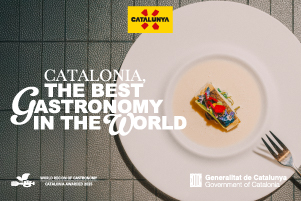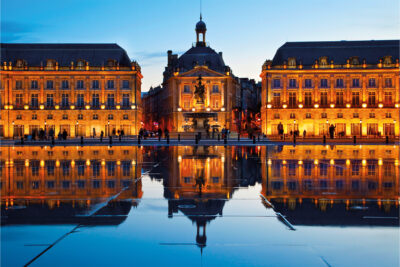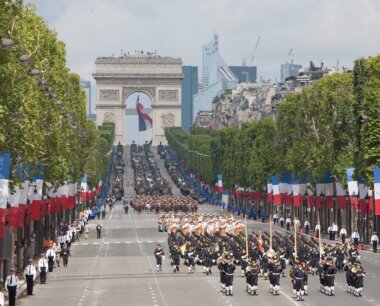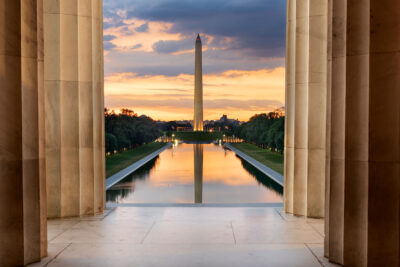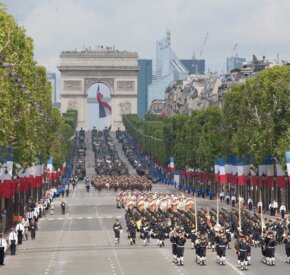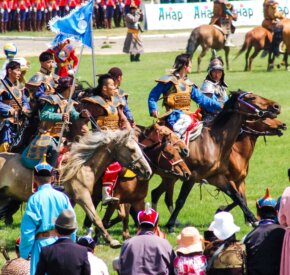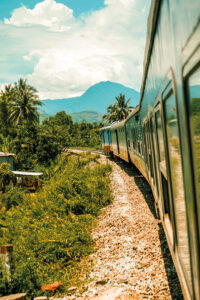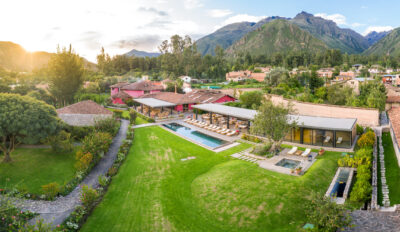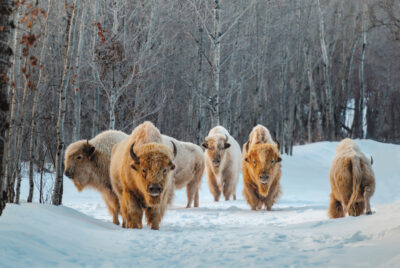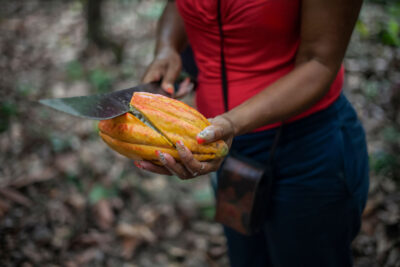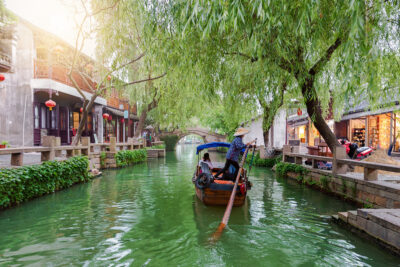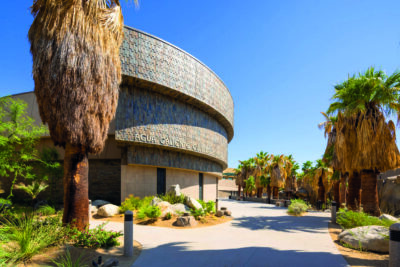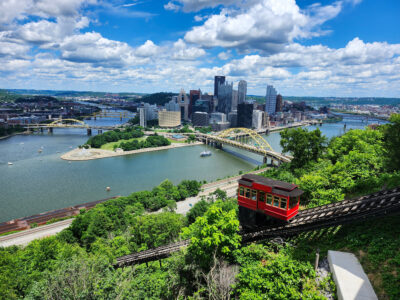
Island of Enchantment: where to go in Puerto Rico
Discover layers of history, a heritage food scene and incredible biodiversity in this Caribbean archipelago and unique US territory
Puerto Rico was ceded to America from the Spanish in 1898. Yet while it’s technically a US territory, this Caribbean idyll has a cultural identity all of its own: a unique blend of Indigenous Taíno, African and Spanish heritage that infuses the island’s art, architecture, food and music. You’ll find it out on the streets of capital San Juan, where Puerto Rico’s textured culture and history is explored on walking tours – or in second city Ponce, home to some of the islands’ finest museums.
The Caribbean’s natural bounty is on fine display across the main island and its smaller islets too. There are forests filled with rare birds and waterfalls, beaches lapped by the Caribbean Sea, bioluminescent bays and mountains dotted with coffee plantations. All can be explored independently or with passionate local guides.
But Puerto Rico has faced hard times over the past decade. In September 2017, Category 5 Hurricane Maria tore through the islands, devastating both rural and urban areas, and becoming the territory’s deadliest storm to date. Just three years later, a 6.4-magnitude earthquake brought Puerto Rico to its knees once more, ravaging the southern city of Ponce.
Puerto Ricans fierce pride and resilience have been essential ingredients in building back. And now, years on, once crumpled museums have reopened, new tour companies have emerged, and new businesses – from sustainable farms to coffee haciendas – are protecting precious vestiges of Puerto Rican culture.
Here’s how to plan a trip to the island:
San Juan
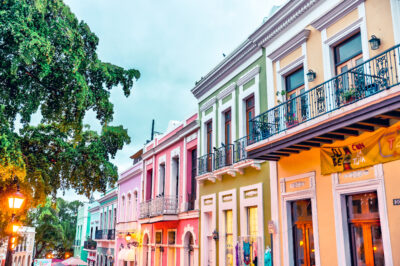
Best for: Early Spanish architecture, history, traditional food, distillery tours
Any tour of the Puerto Rican capital reveals rich layers of history. The city is considered the oldest European settlement in North America, established by Spanish explorer Juan Ponce de León back in 1521. However, the Indigenous Taíno – Native inhabitants of the Caribbean region – lived in Puerto Rico for many millennia before Europeans arrived, and would have numbered in their tens of thousands in the 16th century. They were enslaved by the European colonists and many were killed by diseases brought over by the conquerers. Now few whispers of this Indigenous community are left in the city – though you can learn more about Taíno heritage further afield.
Today the streets of Old San Juan unfold in a riot of pastels and are still thick with early Spanish architecture. Walking tours reveal highlights such as the San Juan Bautista Cathedral, a 16th-century church containing Ponce de León’s tomb, and the brawny Castillo San Cristóbal, a fortified citadel built by the Spanish in the 1700s. It’s one of the two forts that comprise the San Juan National Historic Site – the other is Castillo San Felipe del Morro (the site of a failed attack by Sir Francis Drake in 1595).
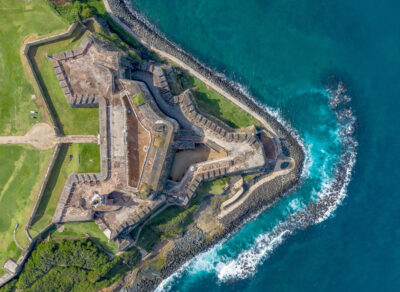
An excursion with Flavors Food Tours pairs a history lesson with a taste of the island. Guides will share stories from the island’s past while introducing you to dishes such as mofongo, a staple meal consisting of mashed plantains, garlic and salt-cured pork. The Spoon Experience’s cooking classes, walking tours and informative bar-hopping trips also come highly recommended.
Make time to visit a rum distillery too. You’ll find Puerto Rico’s oldest distillery, Hacienda Santa Ana, just a short hop outside of San Juan, in the town of Bayamón. It’s the home of Ron del Barrilito, a rum brand that’s been running for more that 145 years. Learn how the heritage spirit is made on a tour, then stick around for a guided tasting and a rum old fashioned at the bar.
Other must-visits include Museo Casa Blanca, which dates back to 1521. It originally served as the home of Puerto Rico’s first governor, Juan Ponce de Léon. Now its rooms are a time capsule filled with art and artefacts from the 1500s and 1600s.
Ask a local: Paulina Salach, co-founder and managing director, The Spoon Experience
“San Juan is an exhilarating culinary and cultural hub, bursting with experiences for every traveller. Indulge in mouthwatering frituras in Piñones, paddle board in the stunning Condado Lagoon, or take a refreshing dip in the ocean.
Stroll through the vibrant, centuries-old streets of Old San Juan, where you can snack on local delights, shop for local goods, revel at the stunning architecture and hop between lively bars. In Santurce, immerse yourself in the local vibe with captivating street art and world-class museums. As for the food, the choices are impressive, ranging from casual eateries (chinchorros) to innovative farm-to-table restaurants where chefs are redefining Puerto Rican cuisine.”
Ponce
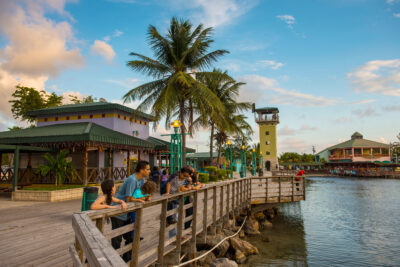
Best for: Fine art museums and architecture
There’s a distinctly European feel to this southern city, with its tree-studded plazas and elegant architecture – and its rich cultural attractions have earned it the nickname “Pearl of the South”.
The diverse architectural styles tell the story of the city: gaze up at colourful Spanish Colonial churches, explore the Gothic-inspired Parque de Bombas (an old fire station now filled with history exhibits), and discover the city’s own Ponce Creole style, characterised by bright façades and ornamental detailing.
Beeline for the Plaza Las Delicias, the buzzing heart of Ponce, overlooked by architectural jewels such as the 1840s-built Ponce City Hall. And leave ample time to dive into the city’s treasure-filled museums. The Museo de Arte de Ponce, one of the largest of its kind in the Caribbean, was damaged in the 2020 earthquake – but it reopened last year following extensive renovations. Some 4,500 works are housed in its modern building, and the collection includes everything from island folk art to paintings by European masters such as Peter Paul Rubens.
Explore Ponce and beyond on tours with Isla Caribe, a tour company founded immediately after Maria.
Ask a local: Melina Aguilar, founder, Isla Caribe Tours
“The Ponce and southern region connects you with incredible history, culture and nature. On the shores of the Caribbean Sea, and bordering the mountainous and coffee-growing area of Puerto Rico, visiting the south is a way to experience all of Puerto Rico in an authentic and unique way. Tradition, gastronomy, architecture, music, history and the warmth of the people can be felt wherever you go.”
Read next: Celebrating freedom in the US Virgin Islands
Central Mountains
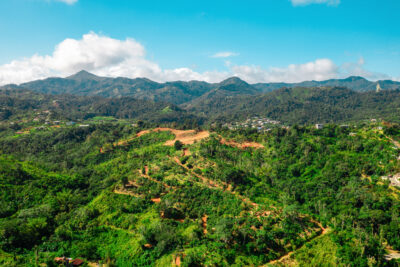
Best for: Coffee, mountain views
There’s one big reason to head to Puerto Rico’s peak-stitched heartlands, and that’s coffee. This lush, mountainous region produces the lion’s share of the island’s coffee and you can experience the culture with a tour of a working hacienda.
You’ll find a cluster of them in Adjuntas. This little mountain town is reached via the Ruta Panorámica (Panoramic Route), whose vistas of rippling peaks make it a challenge to keep your eyes on the road. Once you’ve been decanted into Adjuntas, arrow straight for Hacienda Jacana, a working coffee farm that also opened in 2017.
The region’s coffee farms were decimated by Hurricane Maria, and haciendas such as this one are dedicated to protecting and reviving this essential part of Puerto Rican culture. Take a tour of the farm – which is striped with coffee plants and includes some resident donkeys – and sample some brews for yourself (the hacienda sells its product under the Latitude 18 brand).
Another regional highlight is the Centro Ceremonial Indígena in Utuado. The site protects fragments of Puerto Rico’s Indigenous Taíno culture with a huge store of petroglyphs and a series of bateys (traditional ceremonial plazas).
The region’s culture is matched by its opportunities for outdoor adventure, too. Trails wiggle through the Guilarte State Forest, leading to impressive mountain viewpoints, waterfalls and pools.
Read next: Adventures in Appalachia: where to go in West Virginia
El Yunque
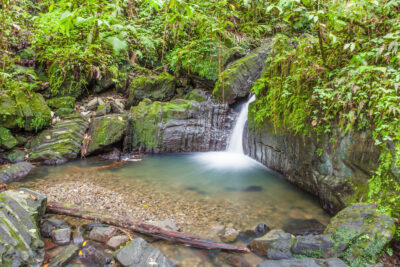
Best for: Hiking, wildlife, views
The wildlife-rich expanse of El Yunque National Forest represents the only tropical rainforest in the US National Forest System.
That should be reason enough to pull on your hiking boots: you’ll trek through shady groves of sierra palms, happening across waterfalls and swimming holes, and spotting abundant birdlife.
Operators such as Bespoke Lifestyle Management Tours lead adventurous guided excursions. The “Off the Beaten Path Hiking Tour” leads you on a bamboo-studded trail to little-known waterfalls and natural water slides, with river wades and rock scrambles along the way. Some tours also combine treks in the forest with a visit to Loíza, a coastal town known for its African heritage and traditional festivals.
Island Journeys is another great option. Tours head into the jungle, with expert guides identifying trees, rare plants and species from woodpeckers to the endemic coquí frog, known for its distinctive call. You can also pair your rainforest adventures with a trip out to Laguna Grande, a dazzling bioluminescent bay in the town of Fajardo.
Don’t miss a trip to the Yokahú Observation Tower, either: this soaring stone tower grants sweeping vistas over the rainforest and the nearby islands.
Ask a local: Jamilex Cuevas, operations manager, Island Journeys tour company
“The Yunque Rainforest, with its flourishing vegetation and waterfalls, is a natural paradise that captivates every visitor. The Yunque is one of the most diverse forests in the US, home to more than 200 species of trees and 120-plus bird species. Whether you’re seeking adventure or tranquility, this tropical rainforest provides the perfect setting for hiking, birdwatching or simply immersing yourself in the beauty of Puerto Rico’s natural landscape.”
Rincon and the West

Best for: Surfing, salt flats, marine life
This might be the Puerto Rico of your imagination: palm-trimmed beaches, postcard-worthy sunsets and crystal clear waters revealing colourful corals and marine life. Puerto Rico’s western reaches tend to be quieter than San Juan and the East, so you might have its golden sands all to yourself.
First and foremost, the colourful little town of Rincón is known for its surfing culture. The region’s reliable swell draws both beginners and pros, with top spots including Domes Beach (conveniently close to the 19th-century Punta Higüero Lighthouse, one of the region’s key landmarks). If it’s your first time catching waves, book a surf lesson – Puntas Surf School comes highly recommended and offers sunrise and sunset sessions – or content yourself with watching the experts.
It’s a fine place for snorkelling and scuba diving too. Myriad species are protected in the waters of the Tres Palmas Marine Reserve. Head out into the blue to spot everything from dolphins and parrotfish to elkhorn coral.
Back in town, Rincón is gaining a reputation as a quirky arts enclave. Independent galleries filled with coastal paintings and sculptures dot the town, and the weekly Art Walk (every Thursday) celebrates the local creator community with food carts, artisan stalls and live music.
Natural wonders abound beyond Rincón. Farther south, the Guánica Dry Forest unfolds. The United Nations International Biosphere Reserve supports some of the island’s endangered species, with precious fauna such as the endangered Puerto Rican nightjar protected with the 9,000 acres. Twelve trails beat through the wilderness, revealing everything from caves to sweeping coastal vistas.
Carve out time for the Cabo Rojo National Wildlife Refuge. It rewards travellers with its flamingo-pink salt flats and rare birdlife. (Note that a new visitor centre is currently under construction – but you can still learn about this precious ecosystem at the Salt Flats Interpretive Center).
Wanderlust tip: Puerto Rico operates a network of small family-owned inns called paradores. These affordable, down-to-earth properties – designated and promoted by the Puerto Rican government – are an essential part of the island’s culture. Expect warm hospitality, clean simple facilities, and sought-after locations in the island’s coastal towns and remote mountain regions. Parador Guánica 1929 is a fine example, providing access to the wildlife-rich Guánica Dry Forest.
Read next: Why Tobago remains the Caribbean’s untouched paradise
Northern Coast
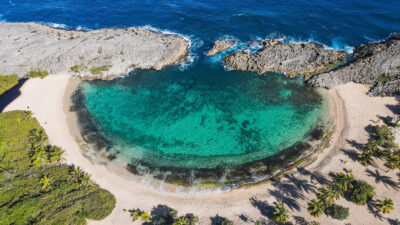
Best for: Agritourism, dramatic coastlines
Some of Puerto Rico’s most photogenic beaches can be found in the island’s northern reaches. Must-visit spots include Mar Chiquita, whose striking limestone promontories form a half-moon-shaped crescent. It’s off the coast of Manatí, with its colourful 19th-century core and down-to-earth restaurants.
But if you do just one thing here, make it a visit to Frutos del Guacabo, a sustainable farm committed to promoting food sovereignty in Puerto Rico. Take a tour of the farm – which is bright with herbs, edible flowers and fruit trees – and then sit down to a veg-forward, farm-to-table meal on site.
Ask a local: Efrén Robles, co-founder, Frutos del Guacabo farm
“Manati is a beautiful and diverse town in the central north of Puerto Rico. Some of our island’s best assets are our people and the natural diversity: in the north, you can find beautiful landscapes, beaches, natural reserves, mountains and a great culinary scene all less than one hour from the Luis Muñoz Marín International Airport. At Frutos del Guacabo through workshops, tours and tastings we educate people on the farm-to-table movement and on local agriculture.”
Read next: Wandersleeps – the world’s most authentic, distinctive and responsible stays






